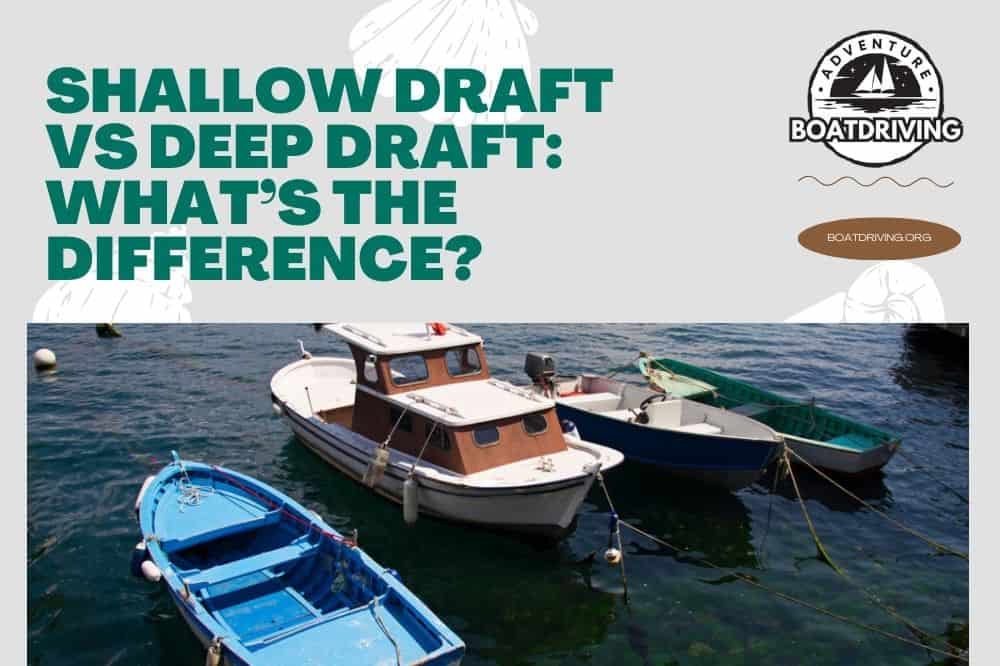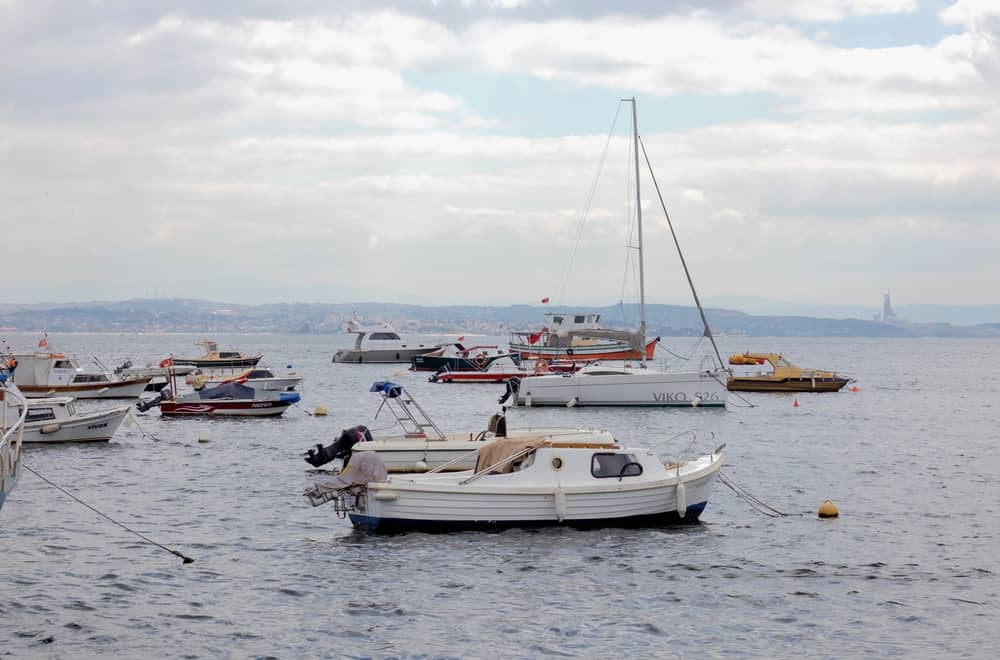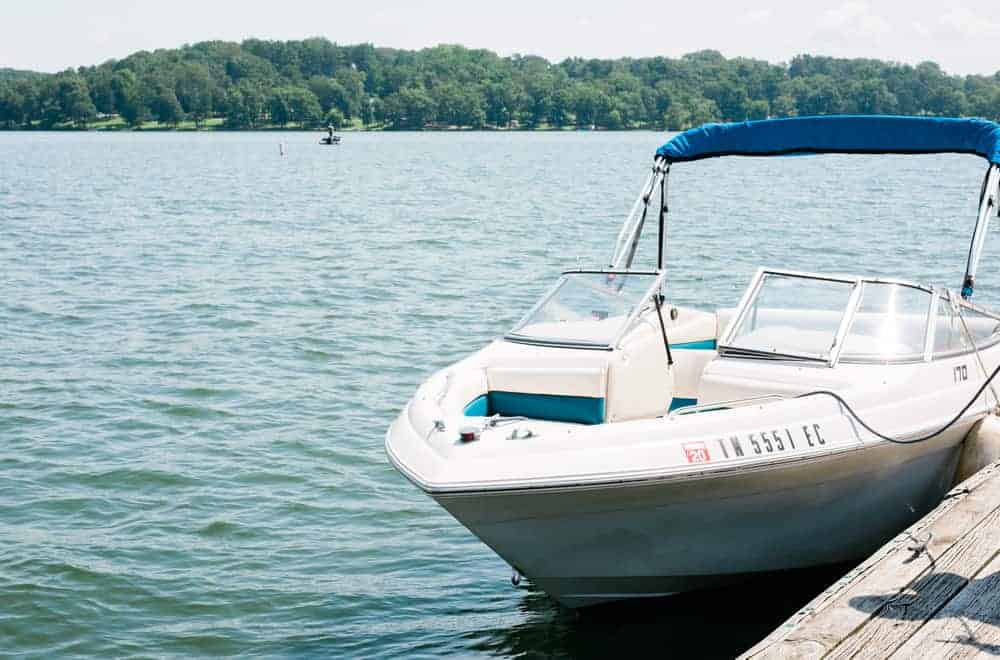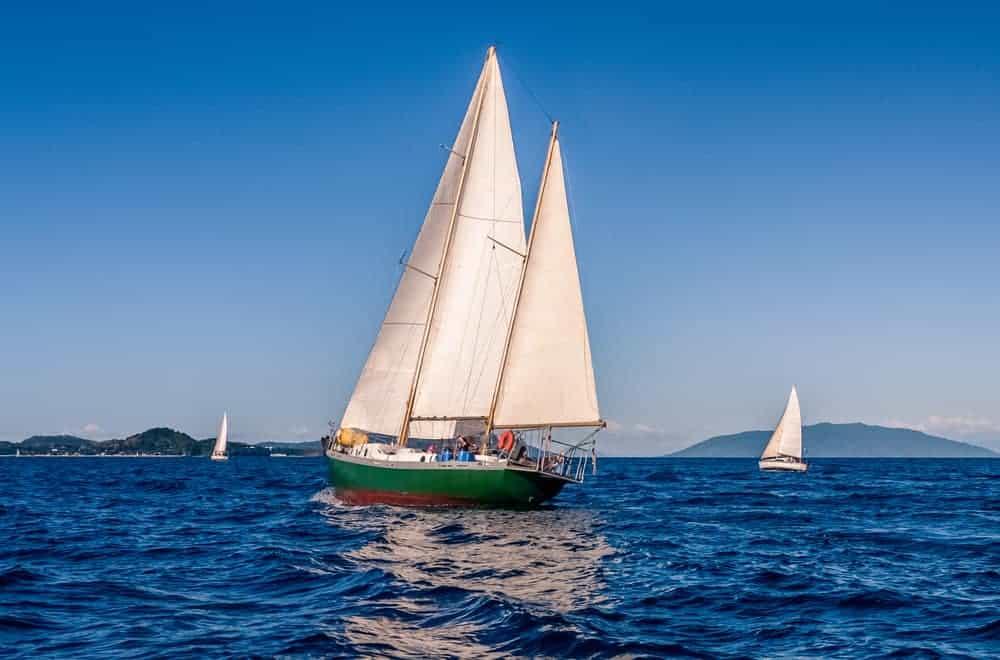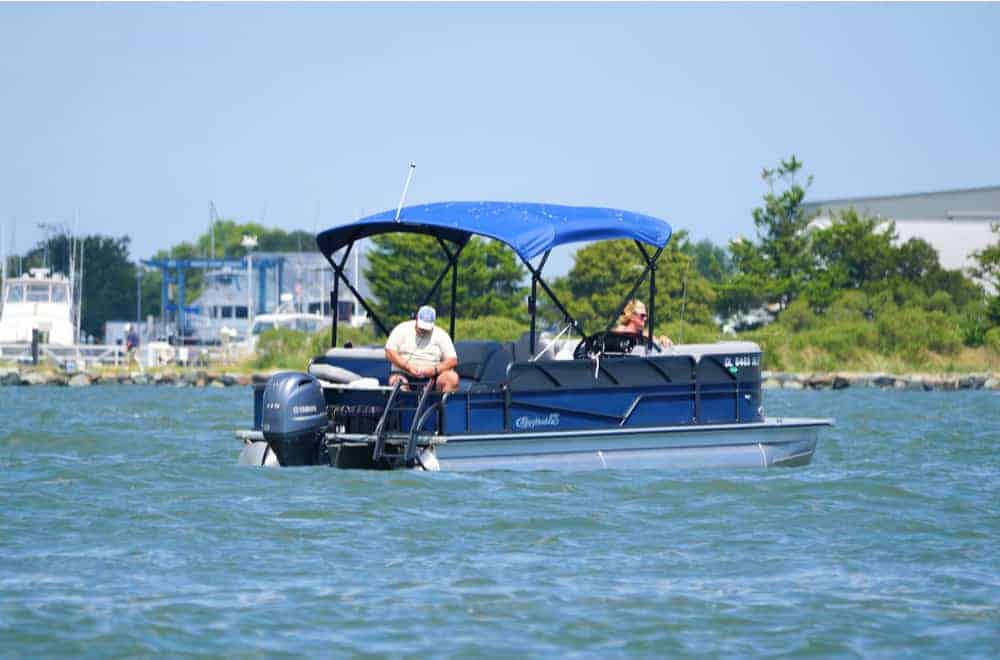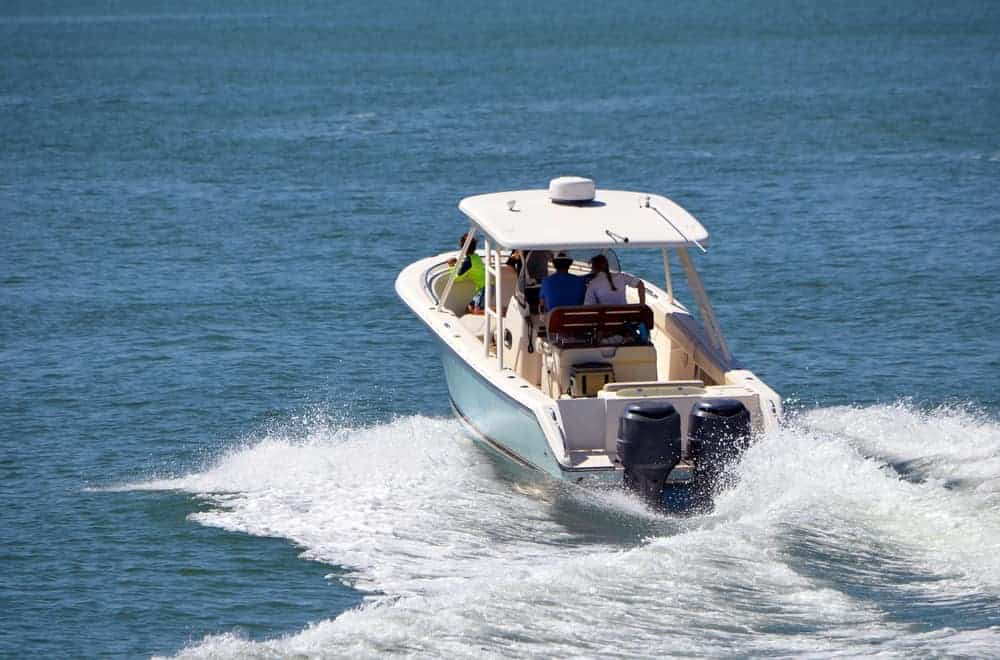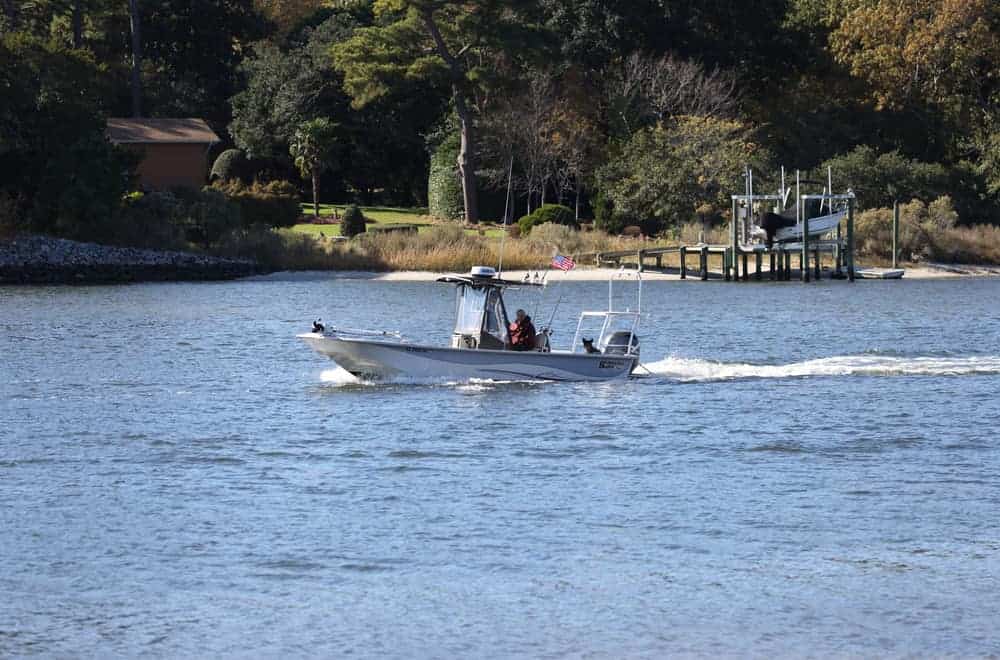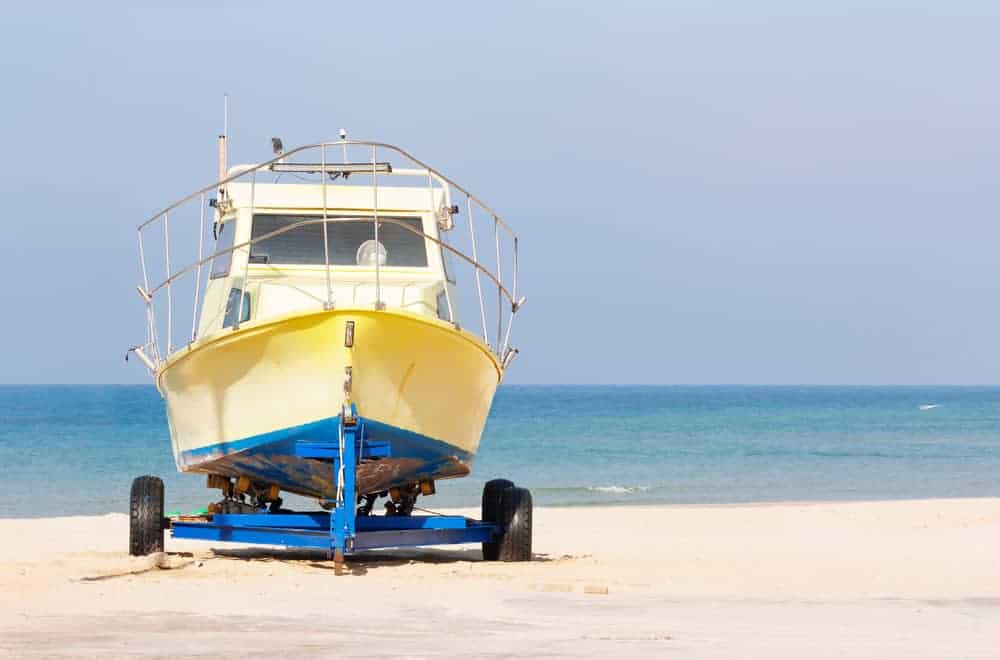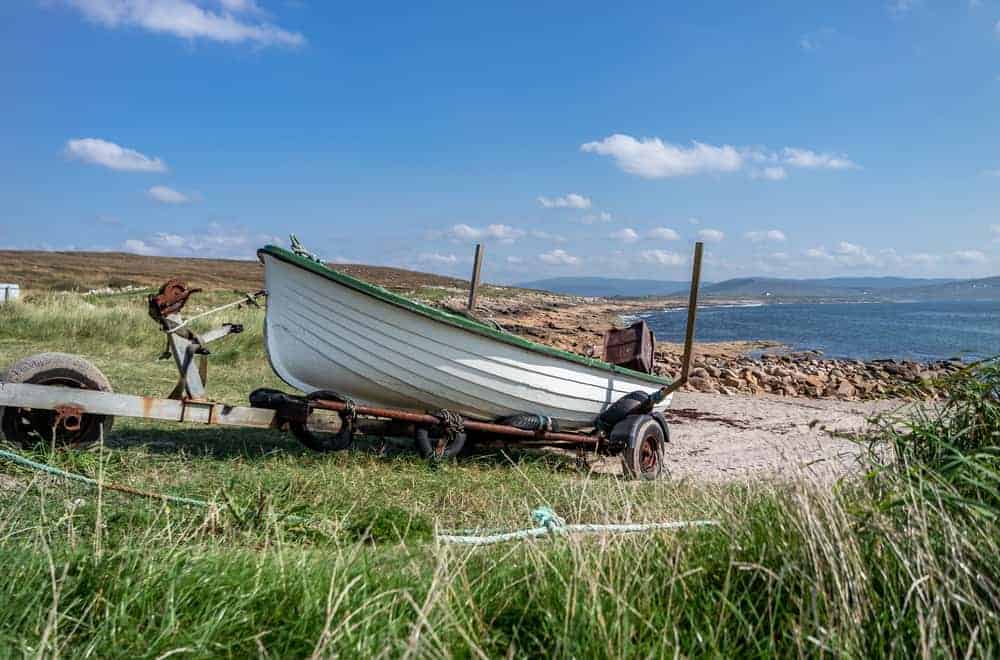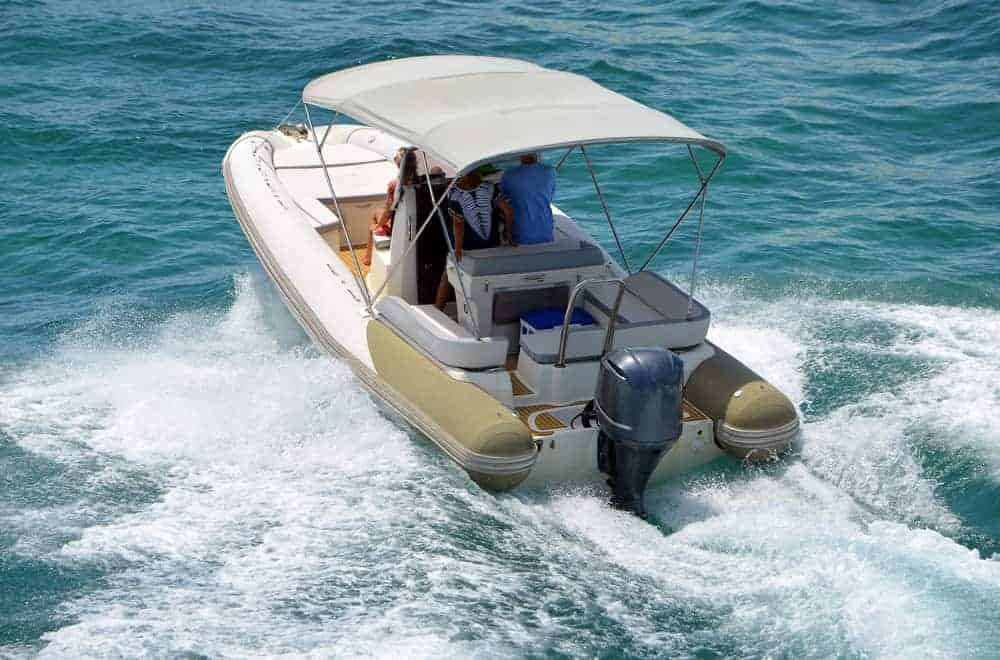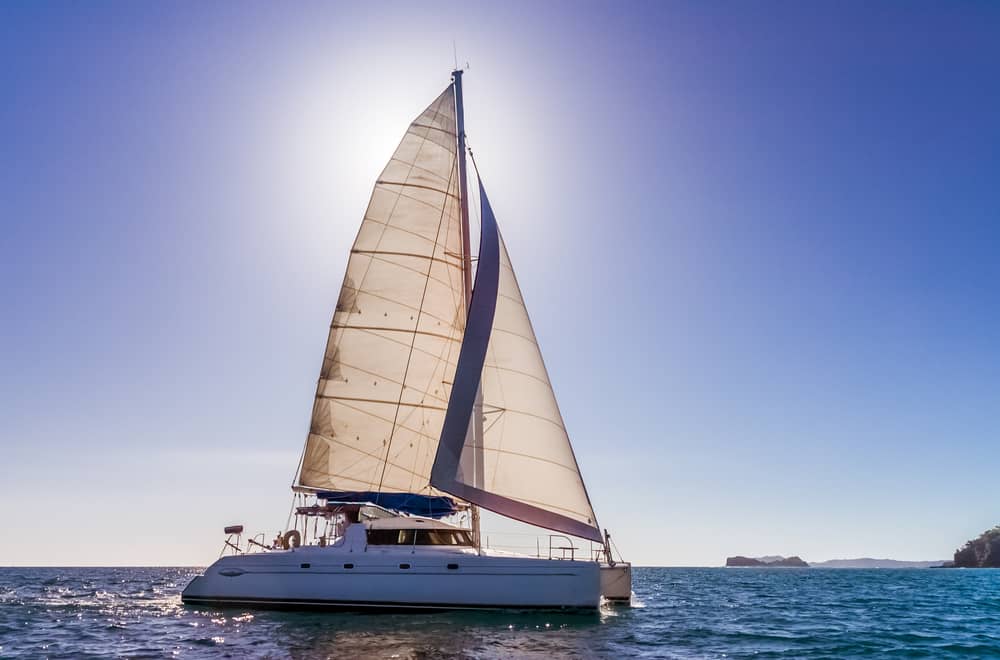If you are in the market for a boat, you may frequently run across some boating terms that may be unfamiliar. This article aims to explain the difference between a shallow draft and a deep draft– and it has nothing to do with your local beer brewery.
Table of Contents
What Is A Boat’s Draft?
The boat’s draft refers to the lowest part of your boat’s hull depth. You need to be aware of this because your boat’s draft is crucial for determining the waters you can safely navigate.
Another way to think about it is how far below the waterline does the bottom of your boat sit. And so, you must consider the design and configuration of your boat to make sure it is capable of handling your intended use.
What Is A Shallow Draft Boat?
Think Jon boat, pontoon boat, and modified V-hull. So, when you look at the underbelly of these boats, you will notice that they are, for the most part, flat.
The flat-bottom design of these boats allows them to sit on top of the water practically. All three boats just mentioned performing incredibly well in shallow waters.
What Is A Deep Draft Boat?
The bottom of a deep draft boat’s hull sits much lower, which often restricts you from navigating deeper waters. In addition, deep draft boats usually don a heel that offers seaworthy vessels much more stability in stormy waters.
Deep draft boats typically have a deeper and rounder hull design to sit lower in the water. As a result, despite being restricted to deeper water, deep draft boats are not as comfortable to ride in.
How Do I Decide?
Location, location, location.
If you own a small Jon boat and plan to stick to large ponds, lakes, or even rivers, then a shallow draft boat is right for you. In addition, flat-bottom-style boats can handle shallower waters much better- not to mention their response and maneuverability.
You can also take out your shallow draft boat to cruise along coastal waterways that are typically calmer than offshore routes and sometimes have shallow areas that a deep draft boat could not pass.
On the other hand, if you desire to experience offshore boating, you should know that a shallow draft boat would not be the best choice. Boats with deeper hulls can stabilize much better in the face of strong winds, storms, and more.
Other Considerations
If you are running an outboard motor off of your boat’s transom, you must be sure to calculate the lowest point of your boat both with the engine in the UP position and the DOWN position.
Also, depending on where you find yourself, tilting up an outboard motor increases the boat’s draft. Likewise, a shallow draft boat rises substantially on the plane, reducing its overall draft when in operation.
Because of this, manufacturers will often include static draft and running draft on a boat’s list of specifications. Running current applies to a boat in operation that is slightly higher than a boat standing still- also known as static.
Shallow Draft vs. Deep Draft
The most significant difference would be the hull’s design to compare shallow draft versus deep-draft boats. Many different boats have a flat bottom; however, Jon boats are the most commonly utilized for hunting, fishing, and utility work.
Many other boats can be classified as a shallow draft, such as skiff boats, although they cannot compete with a Jon boat’s ability to maneuver the very shallowest of waters.
Let’s Talk Hull Design
As we said earlier, boats considered to have a shallow draft are Jon boats, modified V-hull, and pontoon boats. Traditional Jon boat design features the truest flat bottom construction.
A pontoon boat relies on buoyancy to stay afloat. While this enables this boats to have a more shallow draft than deep draft alternatives, a pontoon boat does not have the same maneuverability or shallow water capability as the Jon boat.
Modified V-hulls, also known as a semi V-hull, have a dual capability- to navigate shallow waters while also handling more turbulent waters. Regardless, these boats are still faced with limitations that a Jon boat would not otherwise worry about.
Deep draft boats garner much of their stability from their hull design. These boats feature a more profound and rounder bottom, or you will notice a V-shaped hull as it sits up in the water.
Often, a keel is an additional feature for most sea-faring vessels. Discover Boating describes the keel as “basically a flat blade sticking down into the water from a sailboat’s bottom.” The keel generally holds the boat’s ballast (weight) and helps prevent the boat from being blown over sideways.
Financial Planning
Budgeting for a boat based on whether it has a shallow or deep draft is too general of a comparison tool- so I am going to give you a few examples of each type of boat with their associated price range.
Now, remember these are only ballpark figures and not concrete enough for the financial planning necessary for your newest acquisition. Therefore, I strongly urge you to spend time researching various manufacturers and consulting with an experienced authorized dealer to find the most suitable boat.
In the meantime, you may be able to narrow down your choices by jotting down the answers to these questions:
- Do you plan to use your boat for fishing, exploration, wildlife observation, leisure, watersports, or racing?
- Will you be carrying passengers? If so, how many?
- Do you prefer inland waterways, or do you have offshore sailing in mind?
- Is having a responsive and easy-to-maneuver boat essential for your intended purpose (such as navigating narrow and winding passages)?
- Will you be using your boat seasonally all year long?
- Does your boat need to be capable of carrying lots of gear and equipment (scuba, fishing, etc.)?
- Do you prefer a particular hull design (flat bottom vs. V-hull)?
- How comfortable are you towing a boat?
- Do you feel capable of handling a larger and heavier boat, or do you want to stick to something small?
- Do you want cabin space for overnighters and camping trips?
- What are the associated storage, towing, and operation costs of a bigger vs. smaller boat (and engine)?
- What can you afford?
Keep these questions in the back of your mind as we discuss just a few various draft options for your consideration.
#1 Jon Boat – Shallow Draft
People are attracted to Jon boats because of several reasons. First, they are generally more affordable boats, even for low- to medium-income families. Next, these boats are rugged and durable, making them great for fishing, transport, and utility work. And, of course, these boats are versatile- they can move along in the shallowest waters and even do some offshore exploring if the conditions are right.
If this sounds like the right kind of boat for you, then I recommend you research the various models available by one of the following three manufacturers:
For the boat alone (motor sold separately), the starting price for a ten-footer is as low as $825. However, as the size of the boat increases, so will the price. For example, a 16 foot or 18 foot (most common sizes) Jon boat can range between $3,000 and $5,000, respectively.
Jon boats have various configurations, and each manufacturer offers their select list of additional features and accessories for your comfort and enjoyment- again raising the price.
#2 Pontoon Boat – Shallow Draft
Pontoon boats are becoming a family favorite; however, the beginning price point for a new standard size pontoon boat is more than triples a Jon boat’s cost.
Pontoon boats are priced from $18,000 and upwards with an average price mark of between $30,000 and $40,000 with an engine. In addition to this, you should consider purchasing a trailer, although you should know these boats are more difficult to tie down.
Pontoon boats are incredibly comfortable, boast plenty of deck space and storage, are easy to drive and maintain, and are very safe due to their design.
Families love these boats because their open deck layout is easy to accessorize and can carry absurd amounts of weight. Think portable bathrooms and grills, for instance.
These boats are versatile enough for fishing but do not expect to travel at high speeds or through rough waters. Although you may not be able to go water surfing at the back of a pontoon boat, I would not turn down spending a day at the lake in shallower waters with a nice cool beverage.
Here are three manufacturers to begin your pontoon boat search:
#3 Offshore Sail Boat – Deep Draft
Often is the case that boat owners catch the bug to go out and explore the deep blue- that term we so often use to describe the mythical unknown that lies far beyond what the eye can see.
The hull design is an essential feature for such expeditious feats. However, we already know that shallow drafts will not stand up to the rougher and often turbulent offshore boating conditions.
However, average offshore sailboats have a draft of 3.5 feet on the low end and 6 feet more for larger vessels. Though boat owners must be cautious when navigating close to harbors and narrower channels, the depth of a sailboat’s hull makes it highly stable in deep open waters.
You could find a used seaworthy sailboat for about the purchase price of a new pontoon boat at around $18,000. The key here for finding an affordable offshore sailboat is to find a preowned boat that has been professionally surveyed and inspected.
If you want new, offshore sailboats generally begin to be priced at around $75,000 and upwards. BoatTrader is known as America’s #1 online marketplace for buying and selling boats- you may find the perfect offshore sailboat for you.
Conclusion
Depending on your intended use and where you plan to do most of your boating, one of the single-most essential features to be aware of is whether your boat has a shallow or deep draft and its exact depth.
Whether or not you are limited to shallower waters or can venture out into the deep blue relies heavily on the design and capability of your boat- though that is just one point to consider.
Knowing both the static and running draft of your boat is an important measure to prevent gunking up your motor, unwantedly beaching your boat, or even causing significant damage to your boat’s hull.
There is much to consider when pondering the suitable draft for your needs, so please do not hesitate to drop a line in the comment section below if you have more questions or concerns.

Joseph Fabiano is a writer, nature enthusiast, and stay-at-home father of two wild and free boys. He enjoys starting his day with a good run, hot mug of coffee, and a jump in the Ionian Sea, no matter the weather. Currently based in the Apuglia region of southern Italy, he enjoys discovering the world with his best traveling buddies (his little monkey’s and beautiful wife) at every given opportunity. Every trip, long or far, should be made an adventure according to Joseph as he believes inspiration and creation is right in front of you.
